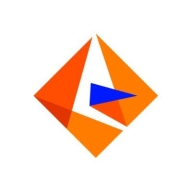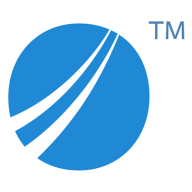

Find out in this report how the two Data Integration solutions compare in terms of features, pricing, service and support, easy of deployment, and ROI.
It is considered cost-efficient because it leads to the re-utilization of channels and platforms, which saves time and money.
Their support aligns with what I have experienced with Informatica data quality teams, and it is quite effective.
Informatica's technical support team is very supportive and provides help whenever required.
The support was good enough, and they were able to resolve all the issues I raised in the past.
Having a local partner was crucial for us while they were there.
TIBCO's support, especially for integration products, is swift.
Technical errors sometimes occur, such as network breakages at the source level, which breaks connectivity.
There are no significant stability issues as long as the product's capabilities are understood and not overly pushed.
One area that could be improved is performance, as PowerExchange sometimes has less performance compared to native connectors when dealing with a huge volume of data.
The addition of data quality dashboards or measures would also help in profiling data to assess its health before sharing or moving it.
TIBCO Spotfire and ClickView need improvement in scheduling, which is critical yet lacking in quality.
It could be very useful if the coding part of using the platform could be more user-friendly in terms of visual capability.
Informatica PowerExchange is considered cost-efficient due to reduced number of APIs needed.
The pricing and cost depend heavily on SAP's licensing structure, especially if using SAP integration services.
TIBCO Spotfire's pricing is high, particularly in traditional markets like Turkey, impacting market penetration.
It also reduces the number of APIs needed for new integrations by offering a unified exchange platform.
The primary advantage of Informatica PowerExchange is being able to extract data from source systems that Informatica does not natively support.
PowerExchange is one of the best software solutions to build integrations with non-Oracle or standard database services, especially for SAP and Hana products.
TIBCO Spotfire integrates with R and Python, offering a differentiator from the competition.
I think having Python included is a big win because you get the chance to customize your algorithm and your in-house development without having a big dependency on a third party.
| Product | Market Share (%) |
|---|---|
| Informatica PowerExchange | 1.2% |
| Informatica PowerCenter | 6.0% |
| SSIS | 5.7% |
| Other | 87.1% |
| Product | Market Share (%) |
|---|---|
| TIBCO Spotfire | 1.1% |
| Microsoft Power BI | 14.1% |
| Tableau Enterprise | 10.3% |
| Other | 74.5% |


| Company Size | Count |
|---|---|
| Small Business | 8 |
| Midsize Enterprise | 3 |
| Large Enterprise | 12 |
| Company Size | Count |
|---|---|
| Small Business | 18 |
| Midsize Enterprise | 12 |
| Large Enterprise | 39 |
Informatica PowerExchange Connectors provides high performance, out-of-the-box connectivity without having to develop custom data access programs.
TIBCO Spotfire is a versatile data analytics platform that can handle large datasets and be deployed on-premise or in the cloud. Its dynamic reporting, easy creation of dynamic dashboards, and highly customizable tool make it a valuable asset for process data analysis, industrial performance dashboards, problem root cause analysis, business intelligence, and real-time analytics for IoT devices in the energy sector.
The solution also offers data science functions, map visuals, R and Python integration, and the ability to write HTML and JavaScript text areas. Spotfire has helped organizations deliver projects more efficiently and cost-effectively, allowing for faster data analysis.
We monitor all Data Integration reviews to prevent fraudulent reviews and keep review quality high. We do not post reviews by company employees or direct competitors. We validate each review for authenticity via cross-reference with LinkedIn, and personal follow-up with the reviewer when necessary.